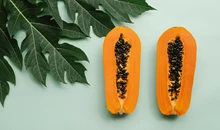
In botanical terms, "fruit" specifically denotes the edible portion of a seed plant that develops from a flower into a mature ovary containing one or more fertilized seeds capable of germination. Fruits originate from various plant types: apples on trees, grapes on vines, and blueberries on shrubs, among others.
Vegetables tend to make us think of savory (and nonsweet) flavors. But it comprises any plant part primarily cultivated for consumption, not exclusively savory flavors. This includes leaves like spinach, roots like carrots, tubers like potatoes, flowers like broccoli, stalks like celery, and yes, even fruits. Essentially, fruits are just one category of vegetables, defined by their role as edible plant parts.
Identifying fruits and vegetables can vary depending on botanical, culinary, and cultural contexts. Here are some general guidelines:
Botanical Classification:
Fruits: Typically develop from the flowering part of a plant and contain seeds. They often have a sweet or tart flavor.
Vegetables: Edible parts of plants that are not considered fruits. They can include roots, stems, leaves, and other parts and their flavor profiles can range from savory to bitter to sweet.
Common Culinary Usage:
Fruits: Often eaten raw as snacks, in desserts, or as part of sweet dishes. Examples include apples, oranges, and berries.
Vegetables: Frequently used in savory dishes, salads, soups, and stews. Examples include carrots, spinach, and broccoli.
Seed Presence:
Fruits: Contain seeds, which may be embedded within the flesh (e.g., apples, tomatoes) or protected within a pit (e.g., peaches, avocados).
Vegetables: May or may not contain seeds. Some, like peppers and cucumbers, have seeds, while others, like carrots and potatoes, do not.
Cultural and Culinary Traditions:
Some foods may be classified differently in different cultures. For example, tomatoes and avocados, which are botanically fruits, are often used as vegetables in culinary contexts.
Growth and Harvesting Habits:
Fruits: Typically harvested from flowering plants after pollination and ripen on the plant or after being harvested.
Vegetables: Can be harvested from various parts of the plant, including roots, stems, leaves, and flowers, depending on the type of vegetable.
Taste and Texture:
Fruits: Often have a sweet or tart flavor and a juicy or fleshy texture.
Vegetables: Have a wide range of flavors and textures, including savory, bitter, crunchy, or tender.
While these guidelines can help distinguish between fruits and vegetables, there may be exceptions and variations based on individual plants and cultural practices.
Fruits Commonly Mistaken as Vegetables
Our perception often labels certain produce, commonly used in savory dishes, as vegetables, but technically they are fruits. Despite their mild and savory taste, these fruits originate from the flower of the plant they grow on and contain seeds or pits. Here are some examples:
-
Avocado
-
Tomato
-
Cucumber
-
Peppers
-
Eggplant
-
Olives
-
Pumpkin
-
Peas
-
Zucchini
-
Squash
-
Okra
-
Beans










